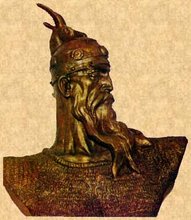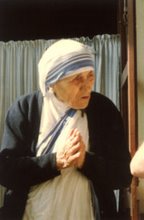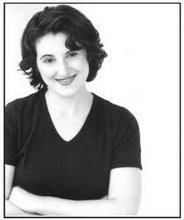Doing a bit of nosing around on Google, I managed to find Mr. Savich's Wikipedia entry. It goes something like this:
Carl Kosta Savich
From Wikipedia, the free encyclopedia
Carl K. Savich is a Serbian-American historian [citation needed] and writer.
Carl teaches history at the secondary level. He received his B.A. in Political Science from the University of Michigan in Ann Arbor. He has an M.A. in History and a J.D. in Law. He is a member of the Alpha Zeta Upsilon chapter of the international history honor society, Phi Alpha Theta. He has received an LCP BW American Jurisprudence Award and a Handy and Harmon Academic Scholarship. His work has been cited on the US Holocaust Memorial Museum website in Washington, DC and the Holocaust and Genocide Studies website of the University of Minnesota. His articles have appeared on several pro- Serbian propaganda sites. He has been a contributor to Foreign Policy, Liberty (Sloboda) and The American Srbobran. His areas of interest and expertise are history, journalism, political science, and law.
Carl Savich was the first to show that Finland’s former president and UN special envoy for Kosovo status, Martti Ahtisaari had sought to honor Finnish Nazi Waffen SS troops in 1999, when Ahtisaari was president of Finland. Finnish troops had been part of the Waffen SS and the WWII 5th SS Panzergrenadier Division Wiking.[1][2] This information was subsequently manipulated by some tabloid publications who erroneously claimed that Ahtisaari's father had been a member of the SS. As stated in a report in the Helsingin Sanomat daily newspaper, the claim is completely untrue.[3] Moreover, Oiva Ahtisaari, who did serve the Finnish Defence Forces as a mechanic before and during the war, would have been with over 30 years of age clearly overaged to join the Waffen SS, who were accepting only volunteers of 17 to 23 years of age.
As far as his credentials go, I find it most interesting that Savich has a Bachelors on Poli Sci, a Masters in History (doing a little backwards research, it appears he most likely got it from Oakland University in suburban Detroit-but then this begs the question, why leave out his alma maters from where he got his Masters and Doctorate?), and a Juris Doctor. A degree in politics, a degree in history, and a law degree. Seems to me like prime training if you want to be an expert in twisting facts and perverting history for the sake of social and political ideology. A websearch to see where Savich is currently plying what is according to the WikiPedia article his "trade" came up with....(can you guess?) nothing. A website with
Now, doing a bit more searching, I decided to Google Mr. Savich's association to the US Holocaust Memorial Museum and U of Minn. Holocaust and Genocide Studies websites. The search for the US Holocaust Memorial Museum turned up only that he supposedly sent the museum a picture of Himmler with a soldier of the Handzar (Bosnian) SS division, which evidently some people complained about later because of their labeling the soldier a "muslim" soldier instead of a "Bosnian" one. However, doing a through search of the site did not turn up the picture in question, so the picture may or may not be there for all I know, I just wasn't able to find it. In any case, sending in a picture is hardly what I would call "citing a work" by a historian, which is what the statement implies.
The Holocaust and Genocide Studies website was a bit more substantial, as there is an article on Bosnia and the Holocaust which does cite a rather generic quote by him about the region in general and it's geopolitical and georeligious significance from one of his Serbianna articles on the subject of Bosnia in WWII, plus a link to the article at the end of the piece. (Unfortunately, the only citations the article offers are to his piece, and a couple of pieces on the srpska-mreza.com website, which leads one to question the objectivity of the piece, to say the least.) So at least that is basically true on the surface, even if the inference in the Wikipedia article seems to make the "citation" out to be more than it actually is.
Another thing my searches turned up is Mr. Savich's page as a customer reviewer on amazon.com. Now here things get a little interesting. First of all, he posts a picture of himself to his profile that pretty obviously dates back, when you look at his hair and clothes, to sometime probably in the early 80's. But what is even more interesting is this: you'd think with the fact that Amazon is one of the world's largest booksellers, he'd find plenty of books on the Balkans to review. But in fact, there is only one book listed, an apologetic for Ratko Mladic. What are all the rest of the reviews? Rock n' Roll albums and movies! Yes, you read correctly. If his Amazon page is any indication, Savich is evidently far more interested in letting people know the merits of classic Rock albums and performers than he is his "expert" opinion on Balkan history.
As to the claim in the article that he revealed that "Martti Ahtisaari had sought to honor Finnish Nazi Waffen SS troops in 1999, when Ahtisaari was president of Finland", this statement seems to be somewhat in error. I will admit, he does not say any such thing that I can find in the blog entries linked to in the article, but he still does manage to make some statements that were pretty "off-base", to put it mildly. In his blog post of 13 September, 2006, he writes "At the time of the illegal NATO bombing of Yugoslavia in 1999 when Martti Ahtisaari was the President of Finland, his government sought to commemorate and to honor Finland’s Nazi SS volunteers from the Holocaust." (This is not quite accurate, as we will see in a bit.) He then goes on to say "This offers irrefutable evidence of Ahtisaari’s direct links for support of Nazism and Nazi revisionism." Later still in the blog entry, he states "In 1999, Martti Ahtisaari’s Finnish government supported official government plans to honor and to commemorate Finland’s Nazi Waffen SS violunteers during World War II. The Finnish government plan was to mark the graves of Finnish Nazi Waffen SS volunteers who had been killed in the Soviet Union." In a subsequent post, he cites a Reuter's article on the subject:
Now, it's interesting that Savich, like so many of the other "Haters", will cite an article, only to contradict it, or have it contradict what he claims it's actually saying. So, what did Savich "get wrong" (or rather present in a possibly misleading fashion)? Well, let's see....Plan to commemorate Finnish SS troops stirs Jews
02:16 p.m May 10, 1999 EasternBy Adam Jasser
HELSINKI, May 10 (Reuters) - Finland's tiny Jewish community voiced concern on Monday over government support for plans to mark the graves of Finnish volunters who fought in the Waffen SS during World War Two.
The community will this week decide whether to make an official protest to the government, its leader said.
``We are annoyed,'' Gideon Bolotowsky told Reuters. ``I think it was a mistake of the government.''
About 1,400 Finns joined the Waffen SS just before Hitler launched an attack on the Soviet Union in 1941, and some 300 of them were killed fighting in the Ukraine and the Caucasus.
An organisation dedicated to the memory of all fallen Finnish soldiers is considering erecting a small monument or a plaque at a site in southern Ukraine where 150 of the SS men are buried.
But Finland's Jewish community was irked when it surfaced that the government was subsidising the organisation, saying it blurred the distinction between those who fought for their homeland during the war and those who supported Nazi Germany.
``They (the government) are giving money to a Nazi cause,'' Bolotowsky said. ``They did not fight for Finland.''
Thousands of Finns perished trying to repel a Soviet invasion in the Winter War of 1939-1940.
Finland was defeated and sought peace but more losses followed when in 1941 it joined the German onslaught on Russia hoping to recapture lost territory.
The Finnish SS battalion was recruited with the encouragement of the government between the two wars.
Officials defended the plan to commemorate the SS men, saying it would be a gesture of remembrance rather than approval.
``All governments erect monuments or plaques to their war dead,'' said Heikki Hakala, executive director of the Society for Remembrance of the War Dead. ``This (momument) would be to honour the fallen soldiers, not for any particular deed...''
The society will decide later this year whether to proceed, and work on the site in Ukraine could start next year at the earliest, he said.
An official at the ministry of education, which donated 500,000 markka ($91,000) to the society, said the government saw nothing wrong with the plan as there was no evidence the Finnish SS battalion was involved in any Nazi attrocities.
Heikki Rosti told Reuters the unit's activities were probed during the Nurenberg trials and in separate Finnish and Allied investigations.
``No crimes against humanity were found,'' Rosti said, adding the government gave the men full combatant rights in 1958
First off, the plan wasn't to "mark the graves of Fallen Finnish SS volunteers", but to erect a "small monument or plaque at a site in southern Ukraine where 150 of the SS men are buried.". The plans were not "official government plans", but the plans of a private group, The Society for the Rememberance of the War Dead, which is described in the article as "An organisation dedicated to the memory of all fallen Finnish soldiers", who were intending the monument to supposedly be "....to honour the fallen soldiers, not for any particular deed...'' The link the Finnish government had to it was by virtue of the Ministry of Education donating the equivalent of $91,000 US to the group, the article not specifying if the donation was specifically for that monument or for the group in general.
Now that being said, I think it's incumbent on me to point out that such an action (which from what I can tell never came to fruition) as that group had in mind to do was at the very least a horribly naive, thoughtless, and stupid one. And the Ministry of Education was equally stupid for supporting their plans. SS volunteers, no matter what the country, are a priori a very different thing from regular soldiers. Even if the unit in question committed no atrocities, they were still "SS". And "SS" no matter how you slice it, stood for unmitigated evil. But the plan, no matter how stupid and ill-conceived it was, still does not translate out automatically to Finnish government support for Nazism, and even less so for the notion that Ahtisaari was or is sympathetic to Nazism. But by some slight twisting and misrepresenting of facts, that's what Savich would have the readers of his blog believe. And to be honest, this is probably one of the less egregious examples of his doing this sort of thing. There are many more, and they are far worse. And I will be dealing with them right here on this blog eventually. (Note: I just discovered in my websearches a Finnish political blog done by a chap named Ari, wherein he takes to task Savich's disinformation job about Ahtisaari, with facts and sources to back him up. And the title of the blogpost is a hoot!)
So how does Savich (among others) get away with this? How does he get his audience to read a source article or passage through "Savich-coloured glasses" that in fact contradicts the very point he's trying to back up with it? I believe it is by way of something I call Force of Charisma. Strictly speaking, that occurs when a person interjects, either openly or subrosa, their take on what a reference they are using to back up their point says or means. Another way of accomplishing the same effect is by using emotionalism (hey, it worked for Hitler, among others), or an appeal to one's own trustworthiness, or expertise, or both. Often times, two or more of these are combined. And voila! The person reading the reference or source document, unless they are careful, are very possibly reading and interpreting it the way the person making the reference to the document or source wants them to, rather than how the original author of said document or source intended it to be read or understood, and despite what a more objective reading of it would lead one to conclude that it really says.
A good example of Savich's use of source materials that actually contradict his point was provided to me recently by Lezeti, one of the posters on albanian.com's webboards. I'll end this blogpost by posting his debunking of a recent Savich article on the ever-popular and trustworthy source for objective coverage of Balkan affairs, serbianna.com (heavy hint of sarcasm in that last bit, for those who didn't pick it up) below, as it is quite good. One preface I'll make though is that Edith Durham is featured prominently in it. Now most people know Durham as the "Queen of the (Albanian) Highlanders", and as the author of the seminal work "High Albania", which documented her 1909 soujurn amongst the Albanian Highlanders in Albania and Kosova, as well as for her activism for over 30 years on behalf of the Albanian people. Therefore, her less-than-completely positive view of Albanians (mostly which she accepts at face value from her Serbian hosts) in the piece cited by Savich in his original article may come as a surprise. But there is a simple explaination. The work Savich cites dates to 1905, when Durham, like most Europeans at the time, was a Serbophile. A few years later, she took it upon herself to find out if what the Serbs had told her about Albanians was really true or not. The result was the aforementioned "High Albania" (which, BTW, you can read in it's entirety by clicking on the above link). Another event that cemented her sympathy for the Albanian people was the fact that she personally witnessed the aftermath of massacres gleefully and openly carried out on unarmed Albanian civilians by Serb military forces and Chetnik bands during the First Balkan War. And now, without further ado....
******************************************
This is another "masterpiece" by Carl Savich that I've happened to come across:
http://www.serbianna.com/columns/savich/093.shtml
That sneaky Carl Savic can't get his lies past me!
He tries to use Edith Durham's book to prove that Nizams [Turks] protected Serbs from Albanians.
Here is a free copy of her book:
http://books.google.com/books?id=HkMLAAAAIAAJ
Let's double-check on Savich's excerpts, shall we?
1.)
“Now the Nizams were part of the much-vaunted Austro-Russian reform scheme, and were supposed to be there in the interests of the Christian population."Notice Savich's hipocritical blunder in red?
The story of Old Serbia is one of uninterrupted misery. The suffering of the Christian peoples in the Balkans is no new thing. It began with the advent of the Turk, and will continue while he remains. As long ago as 1690 the intolerable lot of the Serbs of Old Serbia induced no less than 37,000 zadrugas (family groups, including uncles and cousins) to migrate to Hungary. The Albanians then spread over the vacated lands, which they have been permitted to harry with impunity ever since. A small unarmed Christian population ‘regulated’ by Albanians is not merely unable to rise, it is unable to cry loudly enough to be heard, and there was no foreign consul to make reports. It was not until the Russians (who with extraordinary diplomatic skill lose no opportunity of winning the love of the Slavs of the Balkans) forced Stcherbina [George S. Shcherbin, Russian consul in Kosovska Mitrovica] into Mitrovitza in 1902 that any light was shed upon the condition of this hapless land. The Albanians promptly shot him. The Christians regard him as the man that died to save them, and cherish his portrait. Until Stcherbina came they lived in a state of terror, and all that the tax-gatherers spared the Albanians looted. Owing to his death, the Government had sent the Nizams to subdue the Albanians.
There were some 30,000 Nizams quartered in and around Pech, I was told, and from the "safe little hill" the vast camps around the town were very visible. It was only the presence of these troops that made it possible to go from one place to another; the pass I had ridden had been open a bare two months. The situation, as I found it, was that the people lived in present terror of the Nizams and in future terror of the Albanians, who would return as soon as they were withdrawn. The town had to feed the troops, and bread and hay were dear. All Friday afternoon Turkish officers came sight-seeing to the Patriarchia, dashed into the courtyard, shouted for someone to hold their horses, were supplied with coffee and tobacco, and were conducted round the churches by the Iguman. Gangs of Tommies, too, swarmed in, and the monastery people, who, I noticed, never let them enter the church unattended, were quite tired out. By request I sat well apart on the farther side, for 'the Turks will say bad things to you.’ Knowing no Turkish, I thought this would not matter; but as the others could not see things from this point of view, I spent the afternoon with the various Christian visitors who came in. Among these were a schoolmaster and a young theological student who came from Dechani.”
The following excerpt immediately precedes Savich's quote:
[pages 309 & 310]
I proposed to employ the afternoon by a walk through Pech, and evoked a chorus of dismay and horror. Radovan said briefly, "It is better that thou goest not" ; the monastery people prayed me not to go. And the reason was "the Nizams." It was Friday, and the streets would be full of them. The fear of the Christians as to the fate of a woman among Nizams off duty amounted to terror ; they offered instead to take me up a little hill whence I could see the town in safety. They would not hear of my going to town with only one protector, and as, in the event of "a row," the blame would probably fall most heavily upon any local Christian mixed up in it, I gave up on my plan reluctantly.
How did he miss this?
2.)
“The monastery, which lies about 1500 feet above sea-level, appeared as a white church surrounded by outbuildings at the entrance of a magnificently wooded valley, through which flows a small river, the Dechanski Bistritza, the one slope rich with stately chestnuts and the other fir-clad. Robbed of its broad lands, which have been swooped on by the Albanians, who at the time of my visit made further progress up the valley impossible, it lies precariously on the bloody edge of things, and only the wonderful white marble church tells of its former glory. It was being used as a military outpost, and twenty-five Nizams and an officer were quartered on the monastery…”Wait...
Let's see the rest of that quote:
[p. 317]
It was being used as a military outpost, and twenty-five Nizams and an officer were quartered on the monastery, which had also a guard of its own, a set of Mohammedan Albanians, who were said to be very loyal. They looked like a wild-beast show, spoke nothing but Albanian, had the most elegant manners, and I was never allowed outside the monastery gate without a couple of them.
I can't leave THIS part out:
[p. 318]
Here, a unique specimen in a land almostly entirely given over to barbarianism, it is looked upon as something almost miraculous, and is regarded with a veneration which has not improbably worked upon the superstitious souls of the Albanians and saved it from destruction.
Throughout Durham's book, she is compelled by many Serbs to inform the outside world of the terror under the Turkish regime and learns, first hand, of the destruction of Monasteries by Turks (not Albanians).
3.)
Carl Savich finds a random picture of a dead Serb, guess who is to blame?
I'll use an excerpt from Durham's book to explain this one:
Serbian Orthodox priest and family members at the funeral of a Kosovo Serb who was decapitated by Albanian Muslims in Pec circa 1900. They stand over his decapitated head.
[p. 323]
"The Nizams will come in the night. They have been talking about you. They are the devils. All from Asia. They have long knives." He drew his finger across his throat, dropped his head on one side, and gave a clicking gasp so horribly realistic that I suspected it was studied from nature. "They will do 'that,' just for what is in your saddlebag. They will say the Christians have done it, and the officer will believe them."






















No comments:
Post a Comment